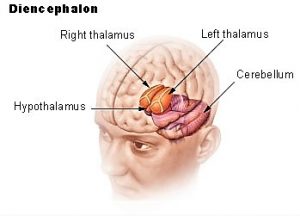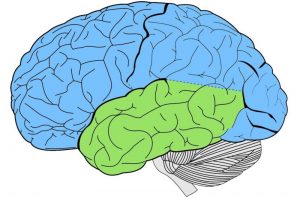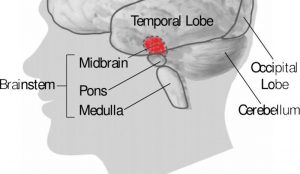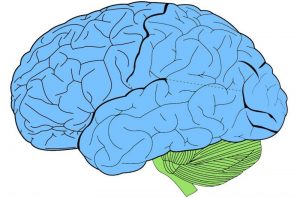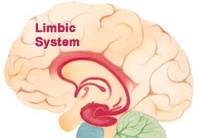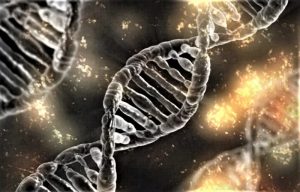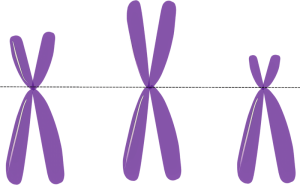Diencephalon
The diencephalon is a part of the brain that includes the thalamus and hypothalamus. It is the link between the nervous system and the endocrine system. The diencephalon receives signals from the nervous system and interprets the signals, then the pituitary gland, which largely controls the endocrine system, responds by excreting hormones.
What is the diencephalon?
It is a structure of great importance that is located in the internal part of the cerebral hemispheres and is formed by the thalamus, hypothalamus, subthalamus and epithalamus and is responsible for transmitting sensory information.
The diencephalon is one of the three main parts of the anterior brain, the other two being the telencephalon and the hypothalamus. It is continuous with the midbrain and hypothalamus.
Characteristics of the diencephalon
The main characteristics of the diencephalon are as follows:
- It has in its interior some important structures of the human brain, like the thalamus or the hypothalamus.
- It is located between the cerebral hemispheres and the brainstem.
- The fibers that travel to the cerebral cortex travel through it.
- It represents only 2% of the total weight of the central nervous system.
- It plays an important role in the limbic system of the brain and is involved in the visceral pathways and the endocrine system.
- The diencephalon is a set of gray substance nuclei.
- It is a region of the brain that contains a large number of nuclei and structures.
- It contains fascicles of white substance that establish multiple connections with different parts of the brain.
- This region of the brain is the continuation of the midbrain.
Location of the diencephalon
The diencephalon is located below the corpus callosum and the fornix, joining on the sides with the hemispheres of the telencephalon. Two main portions are distinguished in it: a phylogenetically younger dorsal, the thalamus brain, and another ventral, phylogenetically older, the hypothalamus, which is a superior vegetative center.
Limits
The diencephalon has the following limits:
- Upper limit: is the subarachnoid space of the transverse brain cleft.
- Lower limit: it is also part of the subarachnoid space.
- Lateral limit: inner capsule.
- Caudal limit: is the plane that crosses the posterior commissure and the mammary tubers.
- Cranial limit: the plane that crosses the anterior commissure and the optic chiasm.
- The entire medial surface of the diencephalon forms the wall of the third ventricle.
Parts
The main parts of the diencephalon include the hypothalamus, thalamus, epithalamus along with the pineal gland and subthalamus:
- Thalamus: Collaborates in sensory perception, regulates motor functions and controls sleep and wakefulness It acts as a station for sensory information. Before sensory information reaches the cortex of your brain, it first stops at the thalamus. The sensory information travels to the area that specializes in dealing with that sensory information and then that information passes to the cortex for further processing. The thalamus also processes the information it receives from the cortex. It transmits that information to other parts of the brain and plays an important role in sleep and consciousness.
- Hypothalamus: is the control center for many autonomous functions through the release of hormones. It is responsible for maintaining homeostasis and blood pressure. When the hypothalamus recognizes an unforeseen imbalance, it establishes a mechanism to rectify that disparity. It also has effects on behavior.
- Epithalamus: located in the posterior or inferior area of the diencephalon that includes the pineal gland, helps the sense of smell and helps regulate the cycles of sleep and wakefulness. The pineal gland is an endocrine gland that secretes the hormone melatonin, which is believed to play an important role in regulating the circadian rhythms responsible for sleep cycles.
- Subthalamus: part of it is made of middle brain tissues. This area is interconnected with the structures of the basal ganglia that are part of the brain.
Also inside the diencephalon is the third ventricle, one of the four ventricles or cavities of the brain that are filled with cerebrospinal fluid.
Function
The function of the diencephalon is to relay sensory information between brain regions and is responsible for controlling many autonomous functions of the peripheral nervous system. It also connects the structures of the endocrine system with the nervous system and works with the structures of the limbic system to generate and manage emotions and memories.
Several structures of the diencephalon work together and also with other parts of the body to participate in the following bodily functions:
- Direct sensory impulses throughout the body
- Controls stand-alone function
- Endocrine function control
- Control of the body’s motor function
- Regulates homeostasis
- Participates in hearing, vision, smell, and taste
- Regulates tactile perception
Diseases and injuries of the diencephalon
The most common diseases of the diencephalon are:
- Insomnia: or lack of sleep, can affect the time to fall asleep, to maintain it or to wake up in the morning. It is related to depression.
- Thalamic syndrome is a strange neurological condition that causes damage to the part of the brain that controls emotions. It produces acute pain at mild stimuli or decreased sensations.
The lesions usually occur as a consequence of thrombosis or bleeding in the arteries that irrigate it. An injury can cause a significant deterioration of sensations on the side of the body opposite to where the injury occurs. There may be tactile discrimination and a loss of appreciation of movements in the joints.
How to cite this article?
Briceño V., Gabriela. (2019). Diencephalon. Recovered on 23 February, 2024, de Euston96: https://www.euston96.com/en/diencephalon/
